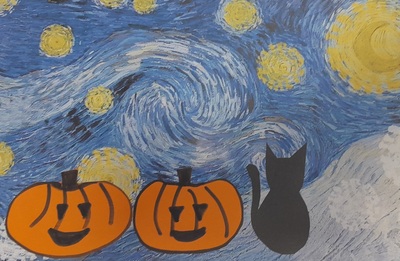
The language
October is for us a month of shapes and every week gets a different shape hero. Because of that at the start of the lesson we revise shapes, sing songs, look for shapes around us and talk about shapes as symbols and our associations with this particular shape which last week was a star.
The only trick is to prepare a great variety of activities to make sure that everyone stays interested but, beginning October, at my school we introduced a new element to the format of our Art Explorers classes. Our group used to meet twice a week and we had quite a few students, younger and older, from pre-school to grade 4. It was not the best solution as there was a huge gap as regards the lingustic skills and abilities, motor skills and abilities and creative skills and abilities. Luckily, we were able to divide the group into two, the older and the younger and this way adapt the course and the activities. The lesson I am describing here was taught with the older group. The younger kids practised the same vocabulary but their focused task was different, the one that I did before with the same lesson (see below).
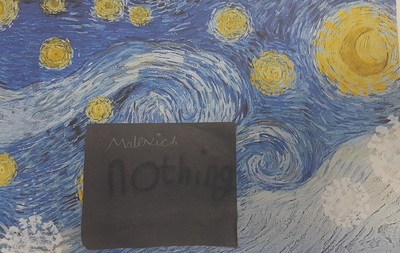
The artist
In a way, I was waiting for this lesson. Starry Night by van Gogh is this one painting that immediately puts me in a good mood (although I cannot help but think about the paradox of how such a troubled soul managed to create such a peaceful image) and it is probably one of the most easily recognised paintings and kids respond to it immediately. I have already used it in the magic wand lesson, with the younger kids and I was looking forward to taking it to another level with a more advanced group.
As usual, we introduced the artist, together with his country and his favourite things. We also looked at different interpretations or parodies of the painting which can be easily found online. They all feature the amazing background of the starry night and…anything: Batman, Snoopy, birds, cats, ghosts, Santa, Mona Lisa and a city of your choice. This is what became the inspriation for the art part of the lesson.
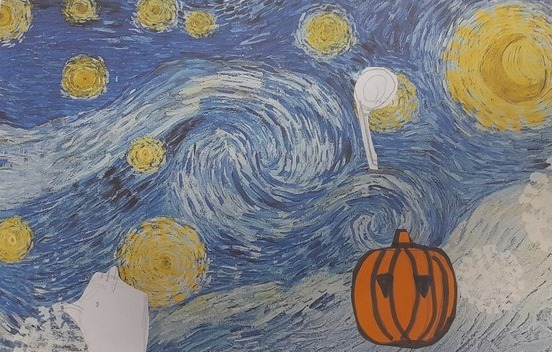
The art
- It was relatively easy. The main ingredient to prepare was the starry night background that we printed in colour, one per child. I was considering preparing it ourselves, from scratch and it would have been amazing but our lessons are too short and there was no chance that I could do it over two different classes. For that reason, I decided to print.
- I also brought a lot of coloured paper and just some regular white paper. The main idea was to draw the shapes, figures, objects for your picture, to cut them out and to glue them back on the starry night background.
- The images that you can see in this post were created by my students and as you can see, they represent different directions that the kids decided to take. There is another Halloween van Gogh, inspired probably by my example, a Starry Night Malevich that got carried over from the previous lesson devoted to a square (and Malevich, see the post here) and we had a starry night that became the setting for a meeting…
- The best thing about this kind of an approach is that any student can produce something according to their abilities, either something very intricate, beautifully drawn and cut out or, on the contrary, something very simple if they don’t feel confident about their drawing skills. I have also decided that next time I am teaching this lesson, I will be also bringing newspapers and magazines for the students to be able to make the collage even more fun and feasible. This will be also beneficial for the students who are not very confident about their drawing skills.

- With my younger group, preschoolers and year 1 of primary, I decided to do something that I have done before and something that was a huge success. Instead of creating a picture, we created out own magic wand with the use of two stars (printed, cut out, decorated, glued together), a chopsticks (although a wooden stirrer will do, too) and some ribbons. The regular glue stick will do the job well, you just need to apply a lot of glue on both stars. Don’t worry if they look a bit damp and unappealing, they dry well and if they are given a chance to spend a night among the pages of a big book, they will also be flat and just perfect.
- Oh, and one more thing, with my regular English classes, we create wands whenever we need a tool to practise Present Continuous (‘Abracadabra, 123, you are…) or just whenever we learn something that can be mimed, for example pets or toys.
- As you can see the last few pictures come from this year’s Autumn Camp which we taught in two groups. I decided to go for a proper collage whereas my colleague, miss Victoria, decided to upgrade it and use mixed media methods: a picture painted by the children themselves and then decorated with stickers. I simply love the idea and how it turned out. With preschoolers, btw.

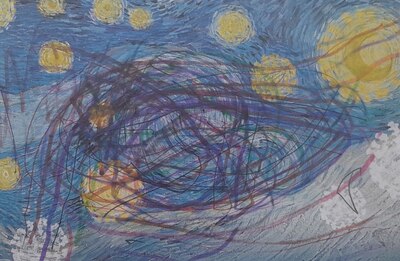
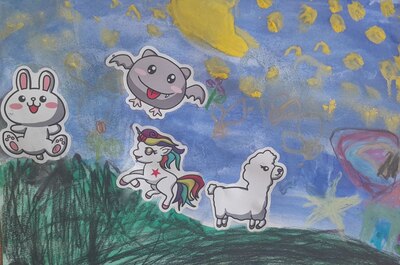

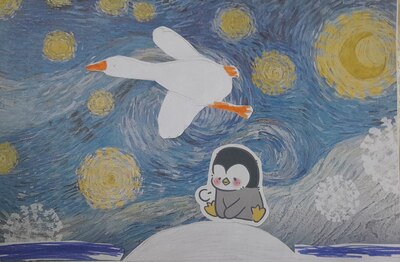
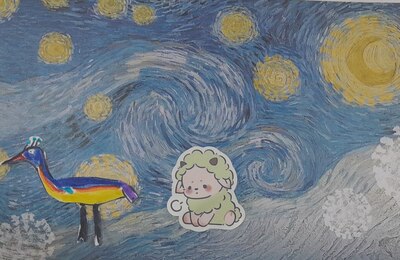
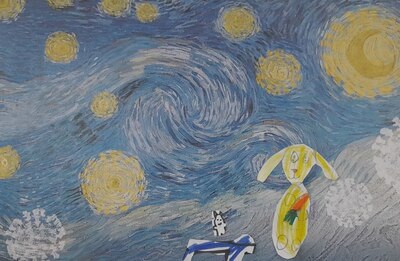
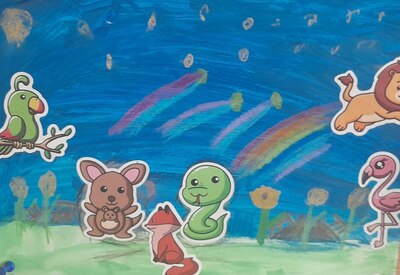
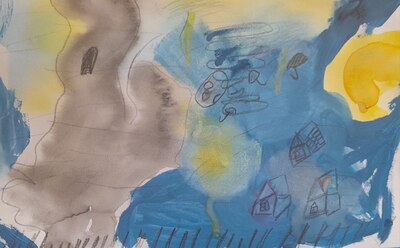
Happy teaching!